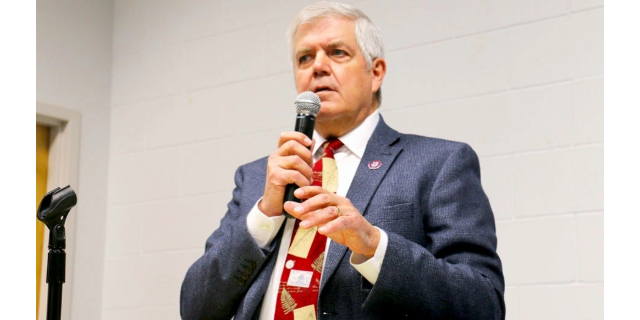Capital Chatter: There is nothing tepid about several congressional races this year
Published 5:30 pm Thursday, April 28, 2022

- capital chatter logo
You can run for Congress without living in the Oregon district you want to represent.
You can run for practically any office despite having rarely voted.
You can run for office without mentioning the above in your voters’ guide statements. Or that your past conduct caused you to be bounced from office … or suspended from the bench … or … .
It’s up to voters to research candidates in the May 17 election. There was an era when the Oregon Voters’ Pamphlet was a primary source of solid information. These days it reads – if your eyes are good enough to read the small type – like an extension of the candidates’ ads.
Political scientist James Moore suggests endorsements are the most useful part of candidate statements. Voters might know little about some candidate but have strong feelings about individuals or organizations endorsing them.
As for running for Congress while living outside the district boundaries, such a candidacy is legal under the U.S. Constitution. In contrast, Oregon law requires legislative candidates to reside where they run. As result, some legislators and candidates had to relocate due to redistricting.
In last week’s Capital Chatter, Moore and I discussed the lukewarm race for governor, which finally is heating up. There is nothing tepid about several congressional races this year, thanks to redistricting, Rep. Peter DeFazio’s upcoming retirement in the 4th District and Oregon’s gaining its sixth seat.
Oregon last gained a district 40 years ago. In that 1982 general election, Republican Denny Smith won the new 5th District, with 51.2% of the vote to Democrat Ruth McFarland’s 48.8%. The 5th District included much of the old 2nd District, which had stretched from Salem to the Idaho border. Two years previously, upstart Smith had snatched the 2nd District from Democratic Rep. Al Ullman, the powerful chairman of the House Ways and Means Committee.
The 5th District has three distinctions. First, it was considered somewhat of a swing district. Second, redistricting shifted its boundaries east, dropping the coastline but adding Bend to the larger Willamette Valley portion. Third, every representative elected in the 5th District has gotten divorced while in office.
In this year’s Democratic primary, centrist Rep. Kurt Schrader faces an intense challenge from progressive Jamie McLeod-Skinner. She ran for the 2nd District two years ago. Schrader has the incumbent’s advantage of money. Five Republicans are on the ballot, with Lori Chavez-DeRemer and Jimmy Crumpacker raising the most money.
Speaking of money …
The strangest race is in the new 6th District. The 16 major-party candidates include high-rollers, state legislators, local elected officials and former officeholders. Democrat Carrick Flynn stands out for his unique campaign.
An obscure candidate when he filed Feb. 17, Carrick has benefitted from more outside spending on his behalf than any other congressional candidate in the U.S.
Those supposedly independent outside ads look harrowingly similar to candidate ads. More than $7 million came from a super PAC affiliated with a cryptocurrency billionaire. And the House Majority PAC, affiliated with House Speaker Nancy Pelosi and other top Democrats, took the rare step of interceding in the Democratic primary by running roughly $1 million in ads touting Carrick. That drew a rebuke from other Democratic candidates and Sen. Jeff Merkley.
Political scientist Moore noted that the Congressional Hispanic Caucus’ PAC has now made its own $1 million ad buy on behalf of state Rep. Andrea Salinas, which puts it at odds with the House Democratic Caucus. “Seems like an interesting twist from a party seeking to keep seats across the country,” Moore said.
On the Republican side, the best known among the seven candidates might be state Rep. Ron Noble.
My pet peeve: Campaign signs – heck, any type of sign – placed in the public right of way regardless of whether it’s an urban, suburban or rural location. Although cities and counties have additional rules, here’s what the Oregon Department of Transportation says:
“… temporary political signs may not be placed on state highway right of way. Additionally, there are restrictions for signs on private property that are visible from state highways, as well as time limits on how long signs can be posted.
“State highway right of way width varies. In some cities it ranges from curb to curb; in other locations, it can extend 200 feet or more.
“Political signs placed on state highway right of way may be removed without notice and stored at a local ODOT maintenance office for 30 days.
“Signs are prohibited on trees, utility poles, fence posts and natural features within highway right of way. They also are prohibited within view of a designated scenic area.”
Back later: This is my final Capital Chatter before the May election. I’ll be back in late May.
“It’s pretty crazy. We’ve seen this for a long time. Apparently to run for office you need to be in a playground with a dog and a family.”
James Moore, a Pacific University professor who studies Oregon elections.




